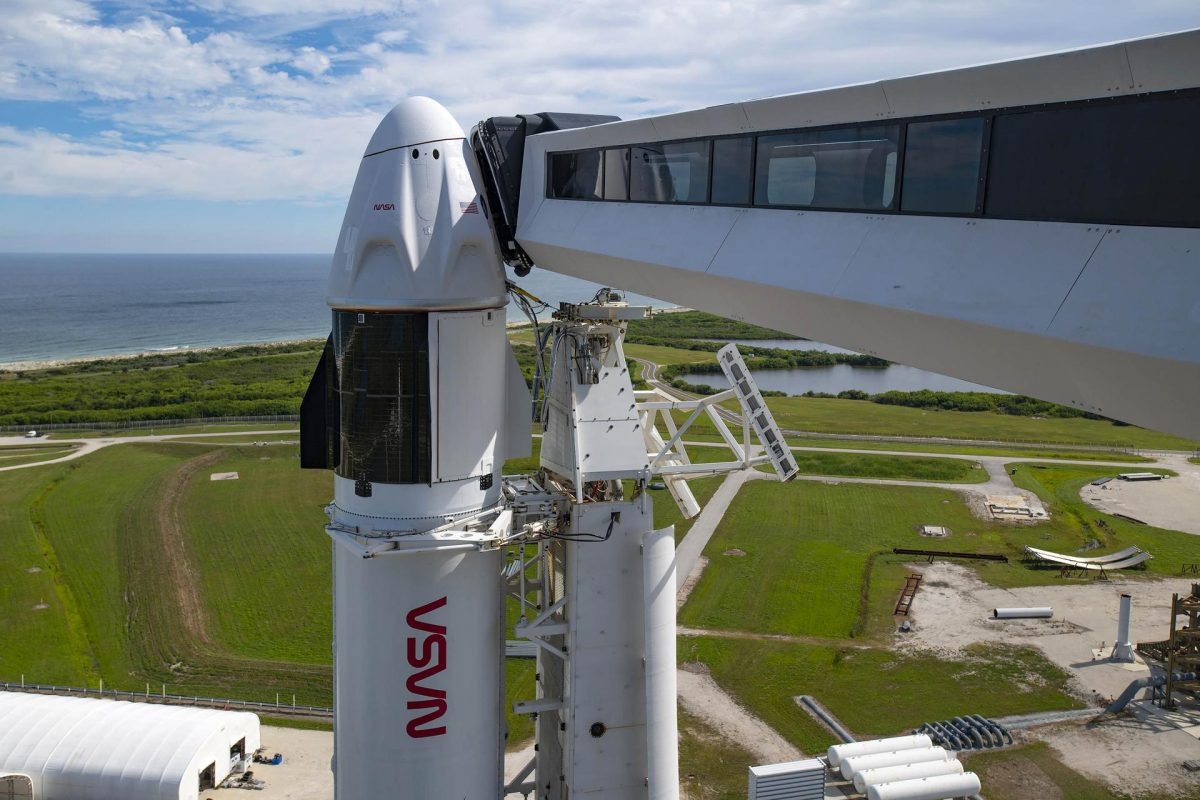The Crew-5 mission to the ISS was postponed from the beginning of September to the 29th as a result of damage to the Falcon 9 rocket. During its transportation from the SpaceX production site in Southern California to the test center in Texas, the intermediate stage of the rocket was damaged — a black cylinder on the side of the Falcon 9, which connects the first and second stages.

“The launch at the end of September will allow SpaceX to complete hardware processing, and the mission team will continue to review the launch date based on the schedule of visits to the International Space Station,” NASA said in a blog post.
Blame the rush
The intermediate part of the Falcon 9 is quite strong, as it is made of an aluminum honeycomb core and additionally wrapped with carbon fiber. In the intermediate stage there is a separation system that allows to disconnect the accelerator in time. But even such reliable elements are sometimes destroyed due to haste — SpaceX recently set a record for the fastest launch of rockets in a very short time. Moreover, the company broke its own record last year for the number of launches — 32, and the year is not even over yet. But the planned next launch was disrupted due to a gross mistake during transportation.
Elon Musk decided to deliver the rocket to the launch site on an island in the Pacific Ocean using a fast military aircraft instead of ferrying it on a slow boat. During transportation, the pressure drop in the transport compartment of the aircraft deformed the rocket body, as a result of which the intermediate stage was damaged. Engineers noticed the problem, but the abrupt change in altitude was carried out too late.
From catastrophe to insane success
In 2008, SpaceX was already on the verge of failure when the third launch attempt failed. Then the engine of the second stage accidentally started before the separation, when it was still inside the intermediate stage. But Elon Musk’s company did not give up and corrected the mistakes, making its reusable Falcon 9 series rockets one of the most reliable.
In 2014, SpaceX and NASA signed a contract for several launches, which resulted in four successful missions to the ISS. After such success, NASA ordered five more flights on SpaceX rockets for USD 3.5 billion. In the meantime, the crew rotation of the ISS is waiting for the Crew-4 mission participants, who will stay in orbit for almost three weeks while the broken rocket is repaired.
Recall that SpaceX planned to replace the heat shield of the Crew-5 mission.
Follow us on Twitter to get the most interesting space news in time
https://twitter.com/ust_magazine

